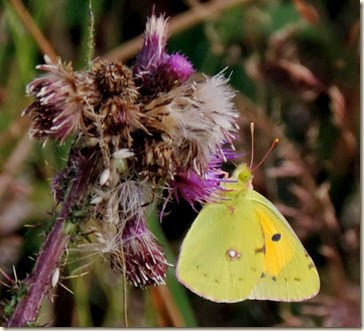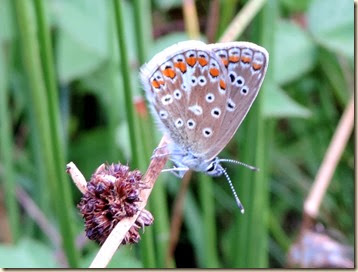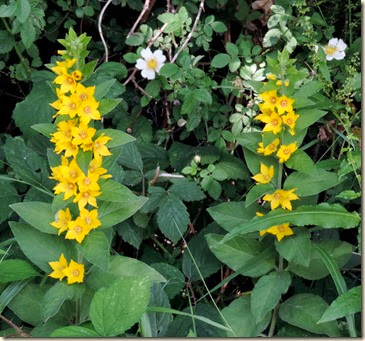This afternoon I spotted a solitary clouded yellow butterfly (Colias croceus) visiting the march thistle flowers in Holman Wood field.
There have been sightings of this immigrant species from several places in Sussex this year, so maybe we will get an invasion.
Some years ago we saw a female ovipositing on bird’s-foot trefoil in Pond Wood on the east of Brede High Woods. I took one egg home and kept it until it turned into a butterfly, then took it back to Pond Wood.
To our surprise there were maybe a dozen clouded yellows in the area. However, the species cannot survive the English winter, so these brief colonies will not be able to persist.
The second generation of common blue butterflies (Polyommatus icarus) is on the wing.
Although it was still warm and sunny at about 3.3pm, this female decided she would settle down on a rush stem. If you look at the tuft of brown flowers on the stalk, you will see a small, white, sausage-like protuberance on the left. This is the larval case of a Coleophorid micro-moth. They are usually very common on rush flower heads.


